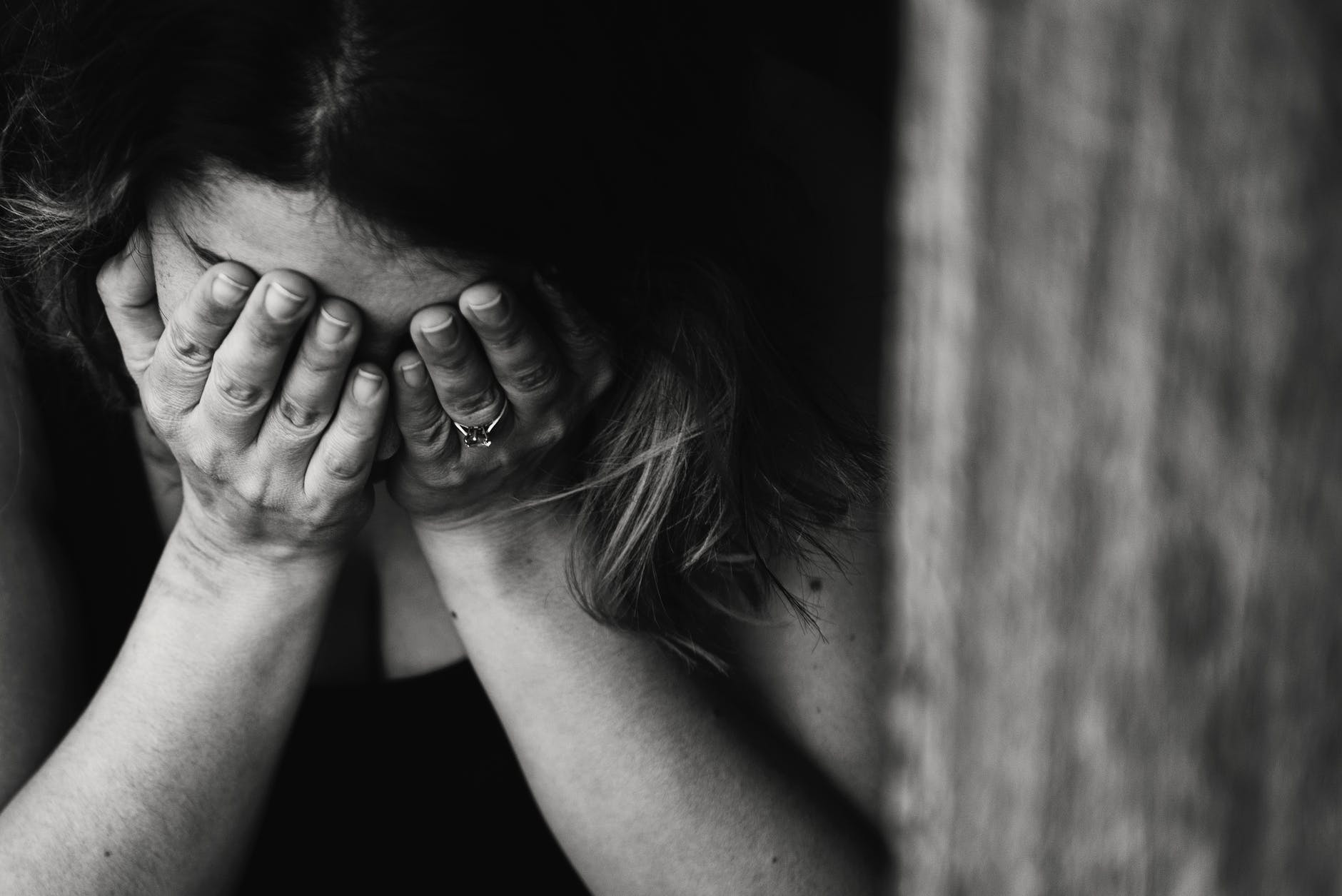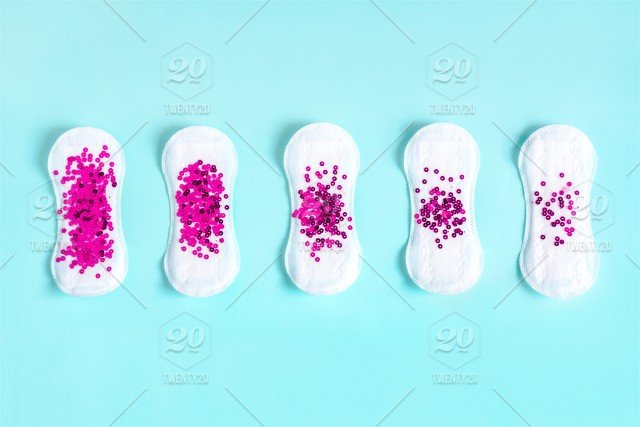DYSMENORRHEA: A NIGHTMARE IN EVERY SENSE OF THE WORD
INTRODUCTION
Earlier on, I talked to a special person like I always do and well, she complained about being in so much pain. I felt so bad for her. It seems to occur at some point every month and sometimes, I wish I could somehow take that away but then, that made me think. Why exactly does menstruation hurt so much and what exactly can be done to reduce or possibly eliminate the pain ? I had to do a research. I thought it wise to share it with my precious readers.
Females are subjected to a lot of dreadful things and painful menstruation just happens to be one of them. Every month in the life of a non-pregnant woman, nature sends them some sort of reminder that they are not preggo. Sadly, it has to involve bleeding. Maybe it would not be much of a problem if it was just about the bleeding but a lot of things just wanna act like they were called on. Nausea, vomiting, headaches, breast tenderness, stomach ache and yes, pains are among those things.
The concept of menstruation is quite understandable from a biological point of view. I mean the walls of the uterus are thickened on arrival of an ovum. It is basically getting the house ready for the supposed foetus or zygote, as the case may be, to have a nice time. Then all of a sudden, no one shows up. This sort of reminds me of parties where too much food is prepared in anticipation of a large turnout and then just a couple of friends show up so the foods have to be thrown away. The uterus does something similar in cases where pregnancies do not occur and it does this on a monthly basis. The uterus basically gets angry and sheds its wall and then, gets happy again and begins to form those same walls, hoping the next ovum would be different. The shedding of the walls of the uterus is seen manifesting as bleeding. Now let’s talk science ;)
DYSMENORRHEA: A PAIN THAT ACCOMPANIES MENSTRUATION
Dysmenorrhea is the medical term for pain experienced during menstruation. It usually doesn’t last more than three days and it is not life threatening. In a normal woman, dysmenorrhea usually doesn’t have an underlying cause (primary dysmenorrhea) but there are cases where dysmenorrhea occur due to pelvic diseases (secondary dysmenorrhea). Dysmenorrhea is known to occur in more than 50 % of women and the degree of pain is heavily dependent on the physiology of individuals.
Basically, there are two types of dysmenorrhea;
• Primary Dysmenorrhea:
This type of dysmenorrhea has no underlying cause and it usually wears off after a couple of days. Medical attention is not really needed unless it is really unbearable.
• Secondary Dysmenorrhea
This type of dysmenorrhea is due to a pelvic disease(s). It literally has an underlying cause and medical attention is always needed. Surgeries may even need to be performed if it really persists. Conditions that may lead to secondary dysmenorrhea include;
Endometriosis: This is a condition where the tissues of the uterus are found growing in places other than the uterus mostly in the ovaries. Back pain is usually experienced in this case. Even pains at the pelvic region are also experienced. Endometriosis can actually occur at the same time with other disease processes that can equally cause dysmenorrhea so concluding that it is usually a cause of secondary dysmenorrhea has often been quite tacky.
Adenomyosis: This is a condition where the inner uterine lining is found on the muscle walls of the uterus. To make this clear, the uterus is divided into three layers; the endometrium, the myometrium and the perimetrium. Every tissue in each layer is supposed to stay confined to its zone but in disease conditions they tend to become radical and thread foreign territories. Adenomyosis occurs due to tissues of the endometrium being found in the myometrium.
Pelvic inflammatory diseases (PID): PIDs are simply infections that affect the uterus and fallopian tubes. These infections can be seen to occur during or just after menstruation and can often result in dysmenorrhea. Chlamydia and Gonorrhoea are two PIDs that can result in secondary dysmenorrhea.
WHAT EXACTLY IS THE PATHOPHYSIOLOGY THAT UNDERLIES DYSMENORRHEA (IN OTHER WORDS, HOW DOES MENSTRUATION BECOME SO PAINFUL ?)
The hypothalamic-pituitary-ovarian axis are in constant interplay and tend to in communication at almost all times. It is basically no secret that hormones control many processes that take place in our bodies. Oestrogen and progesterone are two important hormones in the human female physiology. The levels of oestrogen and progesterone are usually very high during ovulation and just before menstruation.
As a matter of fact, the high levels of the aforementioned hormones is necessary for maintaining the walls of the endometrium in preparation for implantation. When implantation does not occur after some time, the levels of these hormones drop and the walls of the endometrium cannot be maintained so its sheds, this basically results in menstruation. As the walls shed, prostaglandins are being released.
These prostaglandins cause the constriction of blood vessels that supply the uterus cutting off the blood supply and as a result the oxygen supply to the endometrium, causing the endometrium to shed even more. Prostaglandins are also known to mediate pain. The release of prostaglandins causes the tissues of the endometrium to contract and also be subjected to a lot of pain and thus, this results in dysmenorrhea.
WHAT PREDISPOSES A WOMAN MORE TO DYSMENORRHEA ?
Though there isn’t much scientific evidence to back this up but it has however been suggested that the following conditions can be risk factors for dysmenorrhea;
- Early onset of menarche (the first menstrual flow)
- Long periods of menstruation
- Heavy flow of menstruation
- Smoking
- Alcohol
HOW CAN DYSMENORRHEA BE MANAGED AND PREVENTED ?
The management and prevention of dysmenorrhea is quite pertinent and though there are not much of them, they have however proven to be very reliable.
• Management:
Use of NSAIDs: NSAIDs stands for non-steroidal anti-inflammatory drugs. This class of drugs is known to reduce dysmenorrhea by preventing the formation of prostaglandins. NSAIDs inhibit cyclooxygenase (COX) enzymes which are responsible for the formation of prostaglandins. Remember I said that prostaglandins are those assholes that only cause pain. Well, something can actually stop them from being formed. Imagine if that actually happened to assholes in real life. Imagine they were never created ? I find that particularly amusing. Examples of NSAIDs recommended during dysmenorrhea are ibuprofen, meclofenamate and naproxen. Acetaminophen and aspirin can also be taken but they are not NSAIDs. They are just pain killers.
Use of Oral Contraceptives:
Oral contraceptives are designed based on the structure of the hormones; progesterone and oestrogen. Thus, they are synthetic analogues of these hormones which are identical in structure but differ in functions. These contraceptives have more affinity for the receptors meant for progesterone and oestrogen and thus, bind to them more readily and even permanently (not like forever but for a long time) and thus prevent these natural hormones from binding and carrying out their functions. If you have been following, I highlighted that the reason the endometrium sheds is due to the drop in progesterone and oestrogen levels. The only way the endometrium can know this is when the progesterone and oestrogen receptors present on it are empty. Contraceptives occupy these receptors even when implantation has not occurred and so the endometrium is fooled into thinking that the levels of the natural hormones are still high and thus, it does not shed.Dietary Therapies: Foods low in fat and foods containing vitamin B6, magnesium and vitamin E have been proposed in the management of dysmenorrhea but have not been extensively studied however.
• Prevention:
- Maintaining a healthy lifestyle is a sure-fire way to prevent dysmenorrhea. This includes but is not limited to the cessation of alcohol and smoking which are predisposing factors for dysmenorrhea.
CONCLUSION:
Women have many causes for concern and dysmenorrhea is one of them. We, as men, should be more loving, tolerant and caring towards them during these difficult times. Is dysmenorrhea even necessary or is nature just being an asshole as usual ? What are your thoughts on this article ? Feel free to share them with me in the comment section.
REFERENCES
1
2
3
4
5
6
7
8
9
10
IMAGE SOURCES
All images are from pexels, twenty20, pixabay and wikicommons licensed under creative commons and eligible for commercial use.
I'm a proud member of the steemstem community which promotes quality posts in the science, technology, engineering and mathematics fields on the steem blockchain mainly through interaction and engagement. Feel free to join us on discord here


.png)

@kingabesh, there's a myth (maybe it's not) about stomach cramp during menstruation being caused by taking sweet things. How true is it?
It’s a misconception. There is no scientific evidence to support that claim
I thought as much. Thanks by the way.
You’re welcome man. Thanks a lot for stopping by.
what I heard is taking some hot liquid like soup or coffee and eating chocolates bring some relief though.
Yeah. Applying hotel towel at the abdominal region has proven to be therapeutic.
But i think taking sugar actually leads to flowing heavily...
@temi-tayo, true. Those are stories. We understand dysmenorrhea is natural but when in pain that part is kind of difficult to remember. That endometriosis though, is the real b$tch
Yeah. Endometriosis is quite a cause for concern
Nice one @kingabesh
Being a microbiologist, I can only say proper cleanliness and maintaining the hygiene is something which is really really important. Because blood tissue and all provide a good source for some the deadly microbes.
Oh and the best way to have less pain in these days is the exercise or maybe yoga or something (certainly not in those days) and maintaining the healthy diet.
Cheers
Yeah exercise has been proposed to reduce pain although there isn’t many scientific evidence to support that claim.
Hello! I find your post valuable for the wafrica community! Thanks for the great post! @wafrica is now following you! ALWAYs follow @wafrica and use the wafrica tag!
I am male but i can relate. These cramps (and mood swings) that come with menstruation have an indirect effect on we "boyfriends".
Now i know what causes the pain and thus who to blame.
Nice article!
Thank you. Yeah, it’s really tough for the females during those times
I had a roommate in school who always took drip every time she’s on her period. Without the drip or sometimes felvin life would be a living hell for her for a couple of days.
This is a great write up! Good job
Thank you ! Thanks for stopping by
Nice post
Thanks dear. Thanks for stopping by
Congratulations @kingabesh! You have completed some achievement on Steemit and have been rewarded with new badge(s) :
Click on any badge to view your own Board of Honor on SteemitBoard.
To support your work, I also upvoted your post!
For more information about SteemitBoard, click here
If you no longer want to receive notifications, reply to this comment with the word
STOPAnother awesome post. Keep up putting the informative and well informed posts. I want more.
Thanks man. Sure will do.